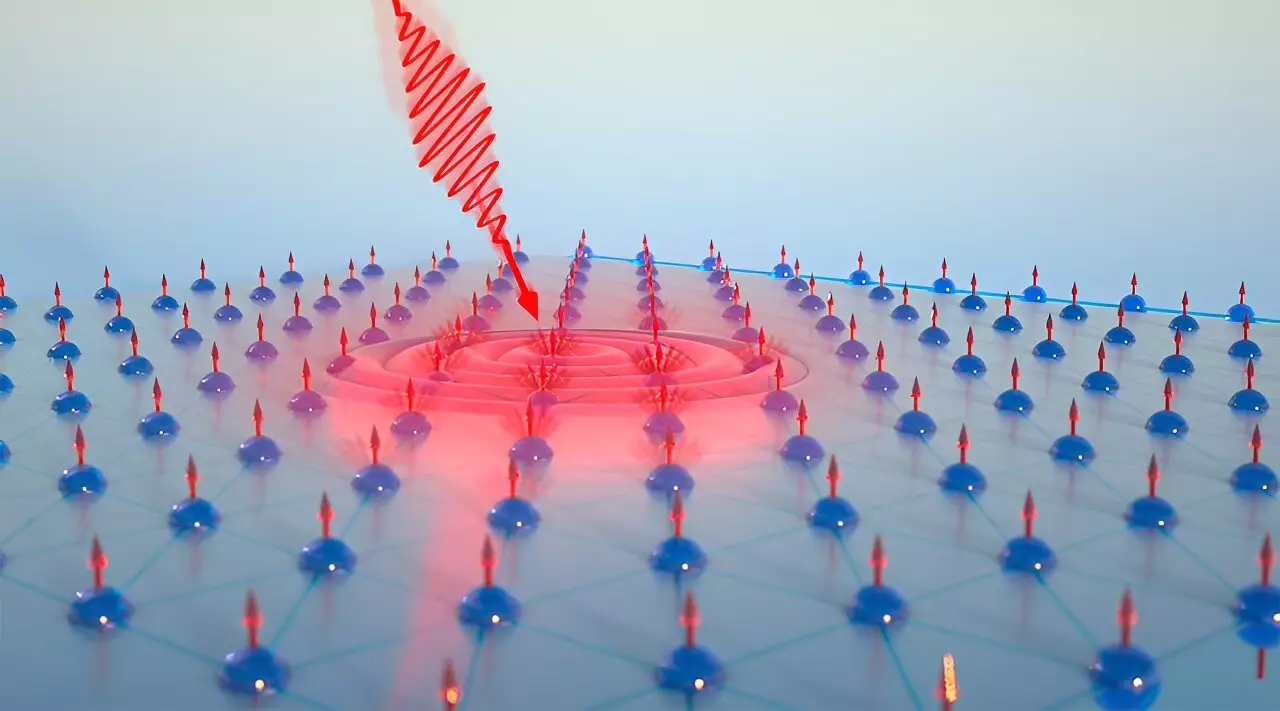In recent years, the quest for more efficient data storage solutions has propelled researchers into innovative realms of material science. A fascinating breakthrough has emerged from the University of Chicago’s Pritzker School of Molecular Engineering (PME), where a team is exploring the untapped potential of MnBi2Te4, a unique material composed of manganese, bismuth, and tellurium. Their investigations have revealed its capacity for rapid and energy-efficient data storage using optical methods—an unexpected development that could revolutionize the way we think about memory technology.
Unraveling the Mysteries of MnBi2Te4
The journey began with straightforward scientific inquiry aimed at deciphering the molecular intricacies of MnBi2Te4. Assistant Professor Shuolong Yang, along with his team, initially focused on understanding why this material, which has been previously noted for its topological insulating properties, posed challenges in experimental settings. Topological insulators like MnBi2Te4 theoretically allow for a unique duality: insulating in the bulk while conducting at the surfaces. However, the expected “electron freeways,” which facilitate the encoding and transmission of quantum information, remained elusive.
Yang’s group was keen on learning why this predicted potential did not manifest in observable phenomena, leading them to employ state-of-the-art spectroscopy techniques. By combining time- and angle-resolved photoemission spectroscopy with the time-resolved magneto-optical Kerr effect, they were able to visualize electron behavior in real-time, unveiling complex interactions between light and electron states within the material.
The application of advanced spectroscopy was pivotal in the research, yet it was not without its challenges. Through this innovative technique, the group came to understand the dual nature of the electronic states competing within MnBi2Te4. Their findings revealed a quasi-2D electronic state that, while overshadowing the topological state, presented intriguing opportunities for applications that had not been previously considered.
One might argue that the ability to manipulate the magnetic and electronic properties of a material using light could serve as a key to unlocking new types of memory storage. The coupling observed between the quasi-2D electrons and external light environments signifies a promising pathway toward developing a more efficient optical memory, challenging the traditional paradigms of electronic memory storage that currently dominate the landscape.
Examining the implications of these findings, it’s important to note that leveraging the inherent properties of MnBi2Te4 could lead to optical memory technologies that operate more efficiently than existing electronic devices. Yang’s group is now focused on employing laser manipulation to further explore the dynamics of this material, seeking to determine whether its unique properties could be harnessed for high-performance memory applications.
Such advancements could dramatically reduce the energy consumption associated with memory devices, addressing a growing concern in an increasingly digital world. The distinction between energy-efficient optical memory and traditional electronic methods underlines significant shifts in how data storage can evolve, presenting the real possibility of more sustainable technology.
Looking forward, the research opens up a plethora of questions regarding the tuning of electron states in MnBi2Te4. Yang’s vision includes striking a balance between the aforementioned quasi-2D state and the original topological state, potentially enhancing the material’s functionality as both a magnetic topological insulator and an efficient optical memory device.
Despite the optimism, considerable rigor in experimental validation remains necessary. The challenge of refining these newly discovered properties into commercially viable technologies will require collaborative efforts across various scientific disciplines. Indeed, the bridge between fundamental research and practical application is often fraught with obstacles, yet the potential rewards make the pursuit worthwhile.
The work being conducted at the University of Chicago PME represents a significant leap in our understanding of material properties and their applications in data storage technology. The serendipitous discovery of MnBi2Te4’s unique capabilities not only highlights the importance of foundational research but also sows the seeds for future innovation in efficient memory solutions. As researchers continue to decode the complexities of this material, the future of optical memory technology may soon be transformed, making strides toward a more energy-efficient, sustainable digital age.


Leave a Reply